Why Spanish Peppers Taste Better from a Jar
And the Ones You Need to Know to Upgrade your Spanish Cooking
Gone are the days when market vendors selling long ristras or strings of sun-dried peppers tied together were a common sight. Although you might still spot them in smaller town markets, especially in Andalusia and Catalonia, nowadays city vegetable shops or verdulerías sell you small packets at eye-popping prices.
In the 1980s, the ristras hung in my grandmother’s kitchen where she would reach for them when needed. She would soak them, and patiently scrape out the pulp with a spoon to be used in soups and stews. It was laborious and reminiscent of a Velázquez bodegón (painting of a kitchen scene).
Today if you are a dried pepper connoisseur you’d be crazy not to buy the paste.
No one’s got time for dried pepper resurrection projects. Don’t shun those pastes sold in squat little jars on supermarket shelves – they are the real deal. Skip them and food just won’t taste Spanish. Substituting with Mexican dried chilies? Please say no as it’s less Velázquez chili alioli and more Aztec punishment (capsaicin, the active component in chili peppers was a tool deployed against badly behaved children and an effective solution to weaning.)
Here’s the thing: Spanish peppers aren’t hot, at least the vast majority of them aren’t. When the seeds crossed the ocean from the Americas, they adapted. They mellowed. They became our cheap secret weapon - not for heat, but for depth, color, and that earthy, sabor or flavor we take for granted until it’s missing.
We consume them fresh, dried, in a paste, pickled, bottled and powdered. Peppers in Spain don’t just bring flavor, they bring color. Without pimentón, chorizo is just a sad, pale cousin of salchichón. Pulpo a la gallega or galician octopus looks flat, almost sickly, without that final dusting of the red powder. And bacalao a la vizcaína or cod in red pepper sauce? Naked without the rusty-red robe lent by choricero peppers.
As for bottled peppers, we've been hooked since the 1860s, when the enterprising Trevijano family from La Rioja -with partners like winemaker Marqués de Murrieta -kicked off Spain’s first vegetable bottling factories. Today bottled peppers are a symbol of quality and El Navarrico is a luxury brand.
In Spain we even have a saying: "Me importa un pimiento" or "I don’t give a pepper" – where others might not give a damn. But the truth is, we do give a pepper, a lot of them. We are hands down the largest consumers of fresh peppers in Europe with 10 kilos per person annually!
Because peppers are the quiet, essential base of Spanish cooking and very few cookbooks, in my humble opinion, truly grasp their world or their quirks. Let me demystify them for you.
Fresh Peppers — The Unsung Heroes
Green Peppers: Cheap, abundant, and the heart of the bendito or holy sofrito (the trio of slowly sauteed onion, pepper and garlic and the base of Spanish cuisine). Fried with potatoes, they’re the perfect sidekick, especially in Plato Alpujarreño (the sturdy dish of chorizo, morcilla and potatoes that you eat on hikes on the mountains of Sierra Nevada), the raw topping that is baked in coca de trempó (Spanish pizza). Also: true gazpacho needs them (sorry, Nigella).
Padrón o Herbón: Once a local Galician curiosity, now a ubiquitous global tapas super star. Problem? Most are soggy, bland versions of the real thing. One in ten might burn your mouth but a lot of people complain this is not the case. Look out for the Protected Denomination of Origin (PDO) version.
Gernika: Padrón’s Basque cousin, thinner-skinned, delicate, often better. They come from the namesake town.
Arnoia, Mougán, Oimbra, Couto: Galician green peppers sold fresh with different green and yellow color gradients. All have a European protected geographical indication (PGI) quality mark. They all host well-known pepper festivals.
Guindilla: served fried or even battered.
Red peppers: Stuffed, fried, roasted, think escalivada (the Catalan roasted vegetable salad), romesco sauce or as a topping in coca de recapte (coca is Catalan pizza).
Fresno PGI: red large pepper with no bitterness or spiciness from Castilla-León. Sauté them with leeks and garlic and serve cold. There are countless others like italiano, de Guadix and morrón. In Guadix, my mother's ancestor's town, the peppers are used to make a unique pepper soup with sardines called Pimentón de Guadix.
Green & Red Bottled Peppers — Spanish Pantry Darlings
Piparras: Green and small and pickled, mild, and essential with anchovies or a good Gilda.
Guindilla: Hot, green and intermediate in size, salted and preserved in vinegar. Love them with Basque pochas (a type of white bean).
Piquillos: Jarred in their own pepper juice, sweet, perfect for stuffing — Navarra’s pride. The name means little beak. The Lodosa ones have a PDO.
Cristal: Navarra again, sometimes fresh, sometimes bottled. Fragile, silky and very posh.
Bierzo: bottled roasted red peppers that are slightly bitter.
Red Dried Peppers — Old-fashioned flavor bombs
Pimentón peppers: Smoked or sun-dried, ground into three types: dulce (sweet), picante (hot), and agridulce (bit of both). The vast majority is consumed in sweet form. There are three PDOs the classic Pimentón de la Vera, Murcia and the newer Mallorca.


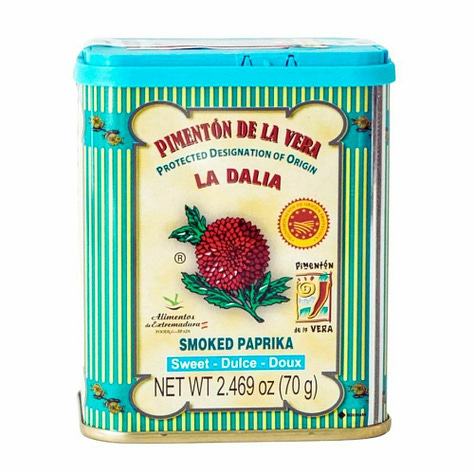
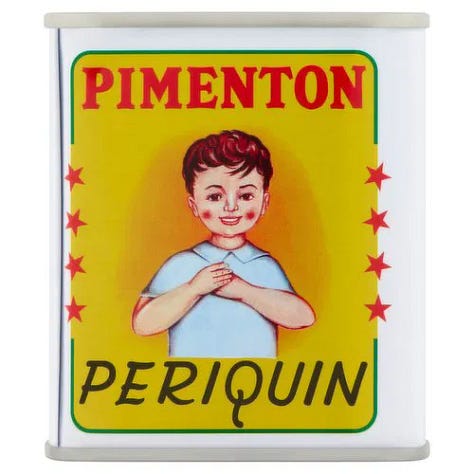

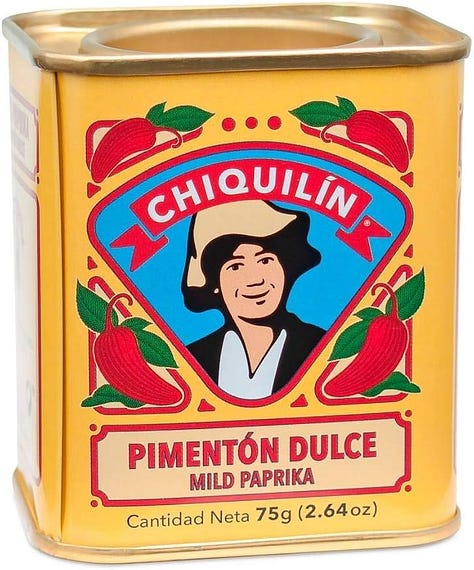
Choricero: The name says it all - these peppers once gave chorizo its signature color and flavor. Today, they’re mostly used dried, adding depth to Basque classic dishes like bacalao a la vizcaína (cod in pepper sauce).
Ñora or Bola: The cutest pepper of them all. Ball-shaped, sweet, and crucial for soups, stews, rice and calderetas. Used in the making of pimenton and essential in salmorreta (the base for many rice dishes from Alicante). Originally named after a monastery in Murcia.
Pastes — Spain’s Best-Kept Pantry Secret
Choricero Paste: Thick, deep, earthy. Saves you from scraping skins. Also called carne (meat) or pulpa (pulp).
Ñora Paste: Same, pure flavor, no effort.
Sofrito in a Jar: Onion, pepper, tomato and garlic sauteed for hours. It’s not cheating. Sofrito also comes as an add-on in stocks which is a double short cut to mid-week paella.
Salmorreta: Base of Alicante rice dishes made with ñoras.
Spanish peppers were never meant to be eaten raw one hundred percent of the time. They were meant to be transformed: dried, smoked, jarred, pickled or cooked. So yes, sometimes the best pepper is the one that comes from a jar. Or a paste. Or a little tin of pimentón that turns everything it touches just a little more Spanish. So please que te importe un pimiento! (translation: give a damn!)


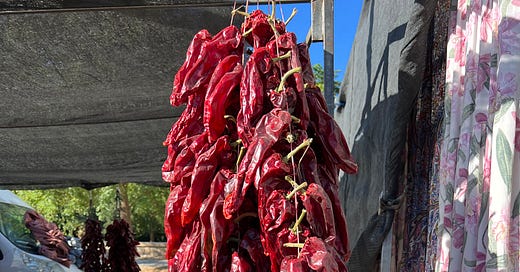




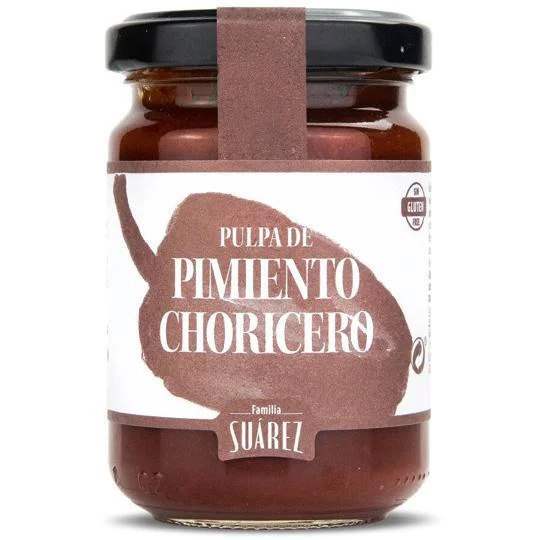
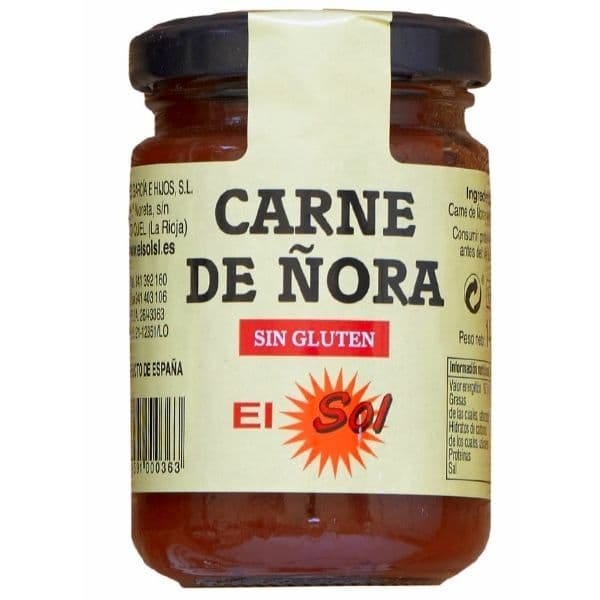
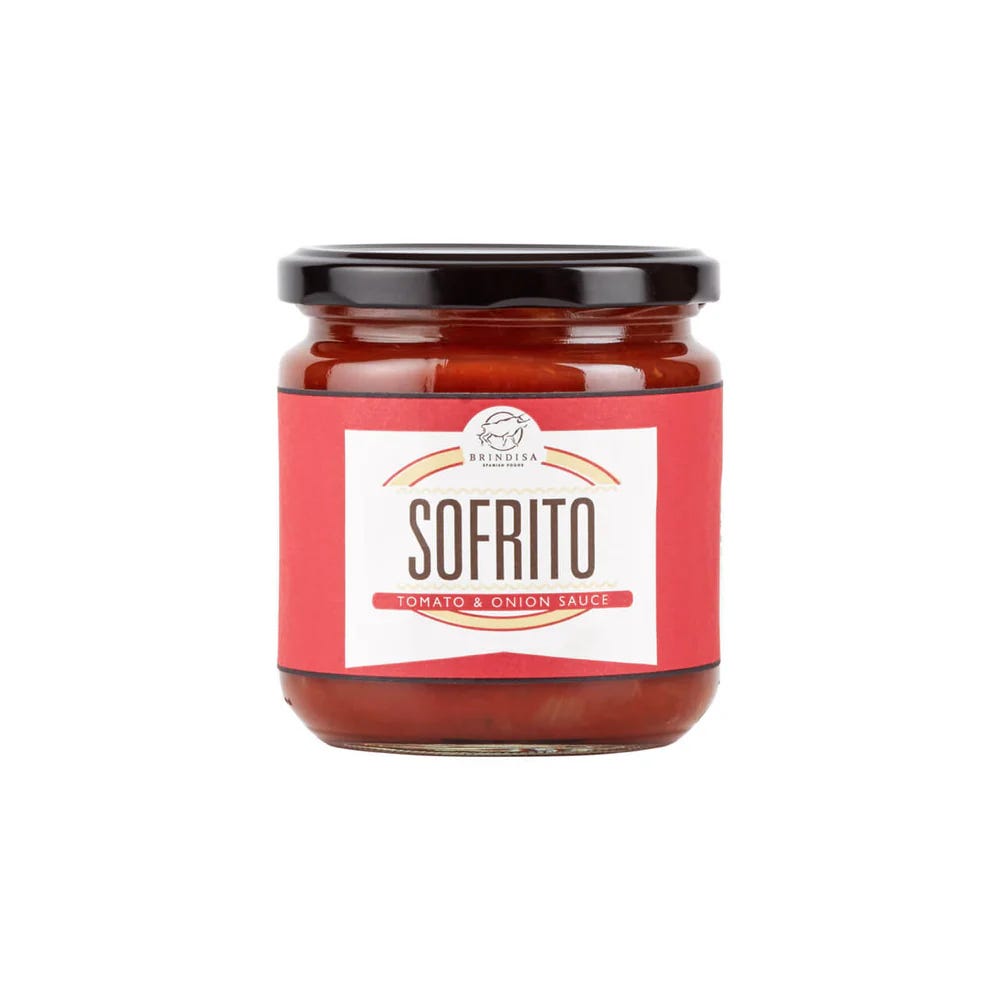
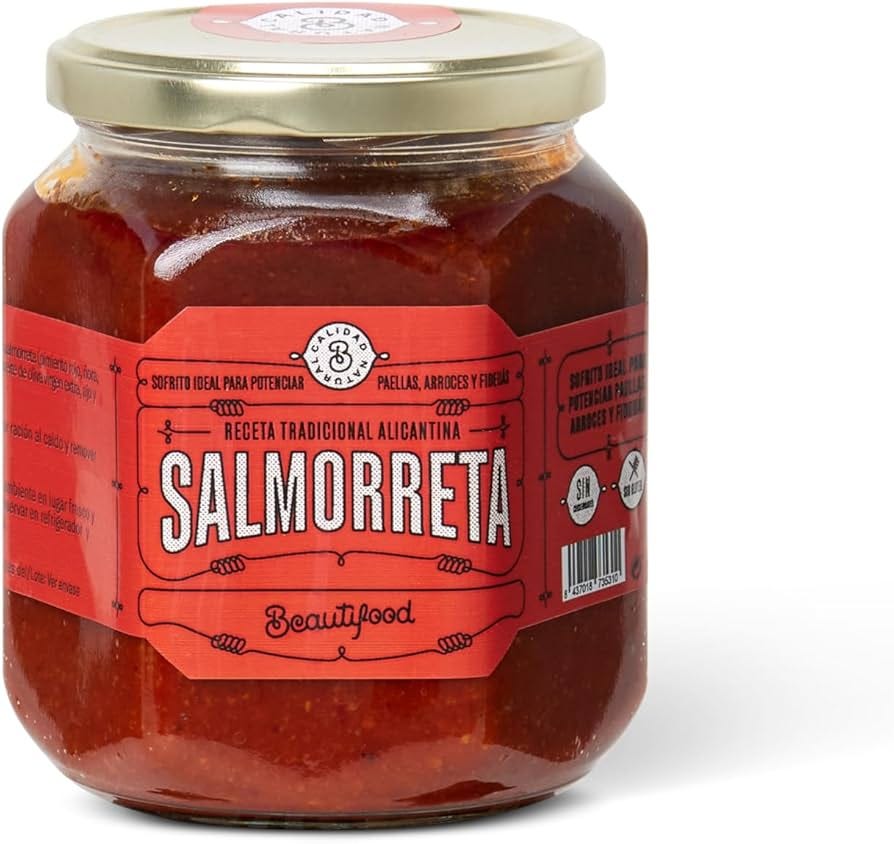
¡Me encanta la foto de la ristra de pimientos secos de Guadix!